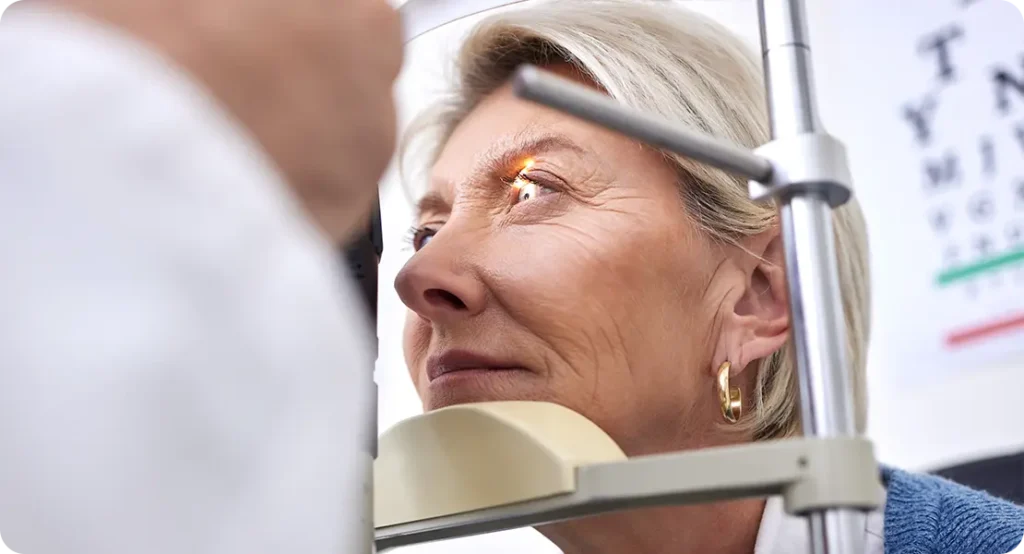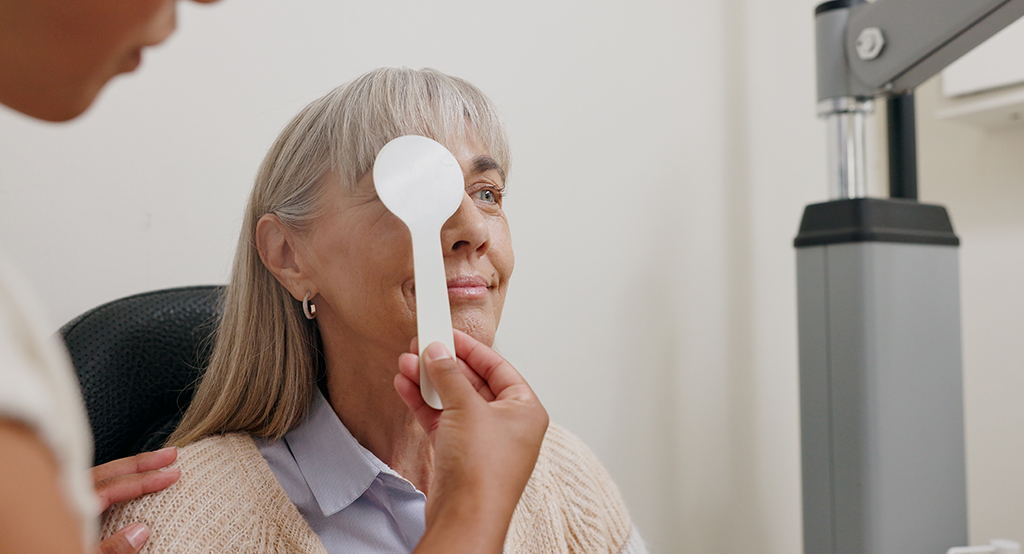If you’ve been told you need cataract surgery, one of the biggest decisions you’ll face is which lens to choose. Surgeons today can select from several major manufacturers, each with its own designs, materials, and optical philosophies. Among these, Bausch + Lomb is a name that has been part of ophthalmology for over a century. But the question patients ask most often is simple: are Bausch + Lomb cataract lenses actually good?
This article takes you through everything you need to know about Bausch + Lomb’s range of intraocular lenses (IOLs). We’ll look at the different models, what makes them unique, how they perform in day-to-day life, and how they compare with alternatives from Alcon, Johnson & Johnson, and Zeiss. By the end, you should feel far more confident about whether a Bausch + Lomb lens could be the right choice for your eyes.
The Legacy of Bausch + Lomb
Bausch + Lomb has one of the longest histories in the field of vision care. Founded in 1853, the company has been responsible for pioneering products in contact lenses, surgical equipment, and ophthalmic pharmaceuticals. In the cataract field, they have developed a portfolio that includes monofocal, toric, enhanced depth of focus (EDOF), accommodating, and multifocal designs.
For patients, the advantage of this long experience is that their lenses are tried and tested. The company invests heavily in optical design, lens materials, and surface engineering to reduce complications such as glare, lens deposits, or instability inside the eye. Their focus has always been on clarity, stability, and comfort—qualities most people care about after surgery.
The enVista Lens: Reliable Monofocal Vision
The enVista range is Bausch + Lomb’s flagship monofocal IOL. Monofocals are still the most widely used lenses in cataract surgery because they provide crisp, predictable distance vision with minimal unwanted optical side effects.
Surgeons often highlight the stability of the enVista once implanted. A key factor in lens success is how well it stays centred inside the capsular bag. A stable lens means more predictable vision and fewer issues with shifting or rotation. For patients with astigmatism, the toric versions of the enVista are designed to hold their axis alignment, which is essential for clear focus.
In real-world use, enVista is known for reducing stray reflections and glare. Patients who drive at night often appreciate this. The trade-off is the same as with any monofocal: you usually still need reading glasses for near vision. However, if your main goal is distance clarity with as few risks as possible, enVista does the job very well.
LuxSmart: An Enhanced Monofocal with More Range

LuxSmart is Bausch + Lomb’s step beyond the standard monofocal. This lens uses an enhanced depth-of-focus design, which aims to stretch your range of clear vision so you can see better at intermediate distances.
In practice, LuxSmart often makes everyday activities like using a laptop, cooking, or looking at a car dashboard more comfortable without always needing glasses. It doesn’t split light the way multifocals do, so issues such as halos or starbursts tend to be less pronounced.
The main limitation is that it doesn’t fully replace reading glasses. Small print and very close work will still often need spectacles. But for patients who want clear distance and better intermediate vision, LuxSmart offers a useful middle ground between a simple monofocal and a full multifocal option.
Crystalens: The Accommodating Alternative
Crystalens is a unique part of Bausch + Lomb’s portfolio. It belongs to the small group of accommodating IOLs, which are designed to move slightly inside the eye to mimic the natural focusing mechanism of the lens. Instead of splitting light like a multifocal, Crystalens shifts position in response to the eye’s focusing muscle.
For some patients, this results in very natural distance and intermediate vision with stronger contrast than a multifocal lens can provide. It can reduce dependence on glasses, particularly for tasks at arm’s length.
However, results vary. The performance of Crystalens depends on the health of the capsular bag and the ciliary body muscles, which differ from patient to patient. Near vision is often improved but not always strong enough to avoid reading glasses completely. It is a lens that requires careful patient selection and a skilled surgeon.
FineVision: Trifocal Technology Through PhysIOL
When Bausch + Lomb acquired PhysIOL, they added the FineVision trifocal family to their catalogue. Trifocal lenses are designed to give clarity at near, intermediate, and distance ranges, aiming for the greatest chance of glasses independence.
FineVision is a mature trifocal platform with a strong record in Europe. Many surgeons value its balance between providing near vision and maintaining good distance focus. Patients who choose this option can often do most tasks without glasses, though some may still need them in low light or for very fine print.
As with all trifocal designs, side effects like halos and glare are a possibility, especially for night drivers. But for those motivated to reduce glasses use as much as possible, FineVision can be a very effective choice.
Comparing Bausch + Lomb with Other Brands
When you compare Bausch + Lomb with other leading names, a few patterns emerge:
- Versus Alcon: Alcon has a slightly larger global presence and more widely used trifocals such as PanOptix. However, B+L’s enVista is considered just as dependable in the monofocal space, and FineVision competes well with PanOptix in trifocal outcomes.
- Versus Johnson & Johnson: J&J’s Tecnis range is strong in multifocal and EDOF designs, particularly with lenses like Synergy. B+L offers more variety by including an accommodating option, which J&J doesn’t currently provide.
- Versus Zeiss: Zeiss lenses are famous for their precision optics, and their AT LISA Tri is one of the most studied trifocals. Bausch + Lomb compares well with its FineVision trifocal but has the additional uniqueness of Crystalens.
Overall, Bausch + Lomb holds its own with solid, reliable monofocals, innovative accommodating technology, and competitive trifocal designs.
Key Strengths of Bausch + Lomb Lenses

- Long history and experience in optical design.
- Reliable monofocal platform (enVista) with good stability.
- Option of accommodating technology (Crystalens), rare in the market.
- Mature trifocal family (FineVision) offering spectacle independence.
- Wide portfolio covering different visual needs.
Limitations to Keep in Mind
- Accommodating lenses vary more in outcome compared to monofocals or trifocals.
- Trifocal lenses, like all brands, can cause halos or glare in some patients.
- Availability may vary by country or clinic, especially for FineVision models.
- No lens eliminates glasses in every situation for every patient.
Making the Right Choice
Ultimately, whether a Bausch + Lomb lens is “good” for you comes down to matching the right model to your eyes, your visual needs, and your expectations. A detailed consultation with your surgeon is essential. The good news is that with Bausch + Lomb, you are choosing a manufacturer with a broad and respected track record.
Frequently Asked Questions
1. What makes Bausch + Lomb lenses different from other brands?
Bausch + Lomb sets itself apart by offering one of the most diverse portfolios in the industry, spanning monofocal, toric, enhanced monofocal, accommodating, and trifocal options. Unlike some competitors who focus solely on multifocal or EDOF designs, B+L has kept the Crystalens accommodating platform available, which remains unique among major lens makers. This means that whether a patient values traditional clarity, extra range for intermediate tasks, or maximum independence from glasses, Bausch + Lomb has a lens that can be matched to that goal.
2. Are enVista lenses good for astigmatism?
Yes, enVista toric lenses are considered very reliable for correcting astigmatism. Their haptic design helps the lens remain stable in the capsular bag, reducing the likelihood of rotation, which is a major concern with any toric IOL. If a toric lens rotates even slightly, the astigmatic correction can be compromised, leading to blurred vision. Surgeons often favour enVista torics because of this stability, making them an excellent option for patients with regular corneal astigmatism who want sharp distance clarity after cataract surgery.
3. Do Bausch + Lomb trifocal lenses give complete glasses independence?
FineVision trifocal lenses from Bausch + Lomb can greatly reduce a patient’s reliance on glasses across near, intermediate, and distance ranges, but no trifocal lens guarantees absolute independence. Many patients find they can read comfortably, use digital screens, and drive without spectacles, but there are always scenarios—such as low light conditions or reading very fine print—where glasses may still be useful. The real benefit lies in the high degree of functional freedom these lenses provide for most daily activities, but realistic expectations are important.
4. How does Crystalens work?
Crystalens is designed as an accommodating IOL, which means it shifts slightly inside the eye in response to the ciliary muscle’s natural movement when focusing. Instead of splitting incoming light like a multifocal lens, it aims to replicate a more natural focusing process by moving to adjust focal length. This design often provides excellent distance and intermediate vision with good contrast, though near vision results vary between patients. Success depends on individual anatomy, surgical precision, and the long-term health of the capsular bag, making patient selection especially important.
5. Is LuxSmart an EDOF lens?
LuxSmart is marketed as an enhanced monofocal lens, but in practice, it functions much like an extended depth-of-focus (EDOF) lens. It offers patients a longer range of clear vision compared with a standard monofocal, making intermediate tasks like working on a laptop or cooking much easier without glasses. Unlike trifocals, it does not split light into multiple focal points, which reduces the risk of halos and glare. However, most patients will still require reading glasses for fine near tasks, so it is best thought of as a comfortable compromise.
6. Are Bausch + Lomb lenses safe?
Yes, Bausch + Lomb intraocular lenses are considered safe and are implanted worldwide in millions of patients each year. They are manufactured with modern materials designed to last a lifetime without degrading or clouding. As with any IOL, the main factors influencing outcomes are the surgeon’s skill, accurate biometry (eye measurements), and careful patient selection. Complications with Bausch + Lomb lenses are not higher than with other leading brands, and their long-standing history in ophthalmology adds to their credibility.
7. Will I get glare or halos with Bausch + Lomb lenses?
The likelihood of glare or halos depends on which type of lens you choose. Monofocal lenses such as enVista are designed to minimise optical side effects, so most patients report little to no glare or halo after surgery. On the other hand, trifocal lenses like FineVision can produce visual phenomena, particularly when driving at night, because they split light to create multiple focal points. While many patients adapt to these effects over time, it is important to be aware of this trade-off before choosing a trifocal lens.
8. How do Bausch + Lomb lenses compare in durability?
Bausch + Lomb lenses, particularly enVista, use high-quality hydrophobic acrylic materials known for long-term clarity and stability. These lenses are designed to remain in the eye permanently without degrading, discolouring, or losing their shape. Durability is a critical factor since cataract surgery is typically a once-in-a-lifetime procedure, and patients can be reassured that Bausch + Lomb lenses are engineered to last as long as they live. Compared with other major brands, their durability is equally strong, making them a dependable choice.
9. Can I choose any Bausch + Lomb lens I want?
Not necessarily. The availability of different Bausch + Lomb lenses depends on your location, your clinic, and the lenses your surgeon prefers to use. For example, enVista is widely available across many countries, but certain models like Crystalens or FineVision may not be offered in every centre. Surgeons also tend to work with a select group of lenses they know well, as familiarity improves surgical predictability. It is always best to ask your surgeon which Bausch + Lomb lenses they implant and why they recommend them.
10. Are Bausch + Lomb lenses a good value for money?
Yes, Bausch + Lomb lenses are generally considered good value, though “value” depends on matching the right lens to the right patient. Their monofocal enVista lenses offer excellent clarity and stability at a competitive price point. Their trifocal FineVision lenses deliver a high degree of spectacle independence without being more expensive than comparable options from other premium brands. Meanwhile, Crystalens offers a unique accommodating option that may suit those who want natural intermediate focus. The true value comes from choosing a lens that meets your visual expectations without unnecessary compromises.
Final Thoughts
So, are Bausch + Lomb cataract lenses good? The answer is yes—provided you select the right model for your needs. Their enVista monofocals are dependable, their LuxSmart lenses extend functional vision, their Crystalens offers a rare accommodating option, and their FineVision trifocals stand alongside the best for glasses independence.
Every brand has trade-offs, and no lens is perfect for everyone. What matters most is matching your personal lifestyle, your eye measurements, and your expectations to the right choice. If you’d like to explore these options in detail, you can speak with our team at London Cataract Centre for tailored advice.
References
1. Tahmaz, V., Siebelmann, S., Koch, K. R., Cursiefen, C., Langenbucher, A. & Hoerster, R. (2022) ‘Evaluation of a novel non-diffractive extended depth of focus intraocular lens – first results from a prospective study (LuxSmart, Bausch & Lomb)’, Current Eye Research. DOI: 10.1080/02713683.2022.2074046. Available at: https://www.tandfonline.com/doi/full/10.1080/02713683.2022.2074046 (Accessed: 10 October 2025).
2. Vukich, J., Modi, S., Fisher, B. L., Stonecipher, K., Lin, L. & Michna, M. (2024) ‘Clinical comparison of a small-aperture intraocular lens versus a monofocal control (IC-8, Apthera by Bausch & Lomb)’, Journal of Refractive Surgery, 40(11), e824–e835. DOI: 10.3928/1081597X-20240731-02. Available at: https://journals.healio.com/doi/10.3928/1081597X-20240731-02 (Accessed: 10 October 2025).
3. Bausch + Lomb (2025) ‘Bausch + Lomb announces publication of enVista Envy full range of vision intraocular lens pivotal U.S. clinical trial’, Bausch + Lomb press release, 11 September. Available at: https://ir.bausch.com/press-releases/bausch-lomb-announces-publication-envista-envytm-full-range-vision-intraocular-lens (Accessed: 10 October 2025).
4. Optometry Times (2025) ‘Study assessing Bausch + Lomb’s enVista Envy IOLs meets all primary end points’, Optometry Times, 16 September. Available at: https://www.optometrytimes.com/view/study-assessing-bausch-lomb-s-envista-envy-iols-meets-all-primary-end-points (Accessed: 10 October 2025).
5. Shultz, M. C. (n.d.) ‘Comparison of two preloaded hydrophobic aspheric monofocal intraocular lenses: PreVue (Bausch & Lomb) vs Clareon (Alcon)’, peer opinion article, Bausch Surgical. Available at: https://www.bauschsurgical.com/resources/peer-opinions/a-comparison-of-2-preloaded-hydrophobic-aspheric-monofocal-intraocular-lenses-a-conversation-with-the-studys-author/ (Accessed: 10 October 2025).

